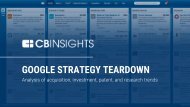mit_impact_full_report
mit_impact_full_report
mit_impact_full_report
Create successful ePaper yourself
Turn your PDF publications into a flip-book with our unique Google optimized e-Paper software.
documented above, these programs then led to the<br />
founding of the MIT Enterprise Forum in 1978,<br />
which, over time, grew dramatically and spread<br />
geographically, attracting participation from alumni of<br />
many classes, as well as many non-MIT participants.<br />
(The drop-off in Table 12 in the most recent decade<br />
merely reflects the need for more time to elapse<br />
before <strong>full</strong> <strong>impact</strong> on recent graduates is measurable.)<br />
In recent years, current MIT students actively have<br />
attended the MIT Enterprise Forum’s Cambridge<br />
chapter meetings, suggesting that the future <strong>impact</strong><br />
of the Enterprise Forum is likely to come sooner and<br />
also will increase in magnitude.<br />
Case Example: Brontes Technology<br />
We end this section by describing some of the<br />
dynamics associated with Brontes Technology, an<br />
example of a successful outcome from the MIT<br />
Enterprise Forum, but clearly one that illustrates the<br />
interplay among multiple parts of the MIT<br />
entrepreneurial ecosystem, some of which we<br />
describe later in this <strong>report</strong>. The Brontes single-lens<br />
3D imaging technology derived from MIT Deshpande<br />
Center research funding to Professor Douglas Hart<br />
’85, which the MIT Technology Licensing Office<br />
licensed to Brontes at its formal company startup<br />
stage in 2003. Professor Hart was a reluctant<br />
entrepreneur who had thought the principal market<br />
application would be facial recognition for security.<br />
“I came from an era where your job was to be a<br />
faculty member and teacher, not to spin out<br />
companies,” he said. But, encouraged by the<br />
Deshpande Center’s executive director, he attended a<br />
2002 MIT $50K networking event and met the two<br />
graduate students who eventually became his<br />
company co-founders. They all presented their<br />
preliminary ideas to the Cambridge Enterprise Forum<br />
Concept Clinic to discuss the commercialization<br />
alternatives they were evaluating for the 3D<br />
technology. That helped them formulate their<br />
business plan for the $50K competition, where they<br />
were selected as the runner-up. As the team<br />
developed a prototype system, they explored the<br />
market opportunities and discovered a large need in<br />
An Evolving MIT Internal Entrepreneurial Ecosystem<br />
dental imaging. After forming the actual spinout<br />
company, they returned to present at the Enterprise<br />
Forum Startup Clinic, and then received two rounds<br />
of seed capital, followed by venture capital funding in<br />
2004. Brontes was scheduling a case presentation to<br />
the regular Enterprise Forum when it was purchased<br />
by 3M in 2006 for $93 million.<br />
In appraising the <strong>impact</strong> of the MIT Enterprise<br />
Forum, Trish Fleming, director of the Cambridge<br />
chapter, observes: “The VCs, the lawyers, the CEOs,<br />
the management types all got used to coming here,<br />
to learning about technology, to making connections,<br />
to finding employees, to providing mentoring to<br />
students and new startups through the Forum. As the<br />
MIT entrepreneurial ecosystem grew, those<br />
relationships were able to grow, too.” The MIT<br />
Enterprise Forum, with thirty years of life and now<br />
twenty-four chapters nation- and worldwide,<br />
inevitably has strongly influenced the culture and<br />
entrepreneurial environment not just of MIT,<br />
Cambridge, Greater Boston, and beyond, but also has<br />
had untold vast effects elsewhere, influencing MIT<br />
alumni and many others to form and build new<br />
companies.<br />
The MIT Entrepreneurship Center<br />
In 1990, Professor Edward Roberts ’57 proposed<br />
to Lester Thurow, then dean of the MIT Sloan School<br />
of Management, that he support the formation of an<br />
MIT-wide entrepreneurship program to serve not just<br />
MIT Sloan, but the rest of MIT as well. Its goal would<br />
be to educate and develop those who will create,<br />
build and lead tomorrow’s successful high-tech<br />
ventures. It also planned to increase dramatically, and<br />
then provide central coordination and integration of,<br />
MIT entrepreneurship classes and student activities.<br />
But, unlike nearly all other university entrepreneurship<br />
programs, which rested primarily on experiencesharing<br />
by entrepreneurs and investors, the proposed<br />
Entrepreneurship Center would follow the MIT<br />
tradition of “Mens et Manus.” It had to connect<br />
rigorous scholarly pursuit of knowledge underlying<br />
entrepreneurial success with effective transfer of that<br />
ENTREPRENEURIAL IMPACT: THE ROLE OF MIT 47



